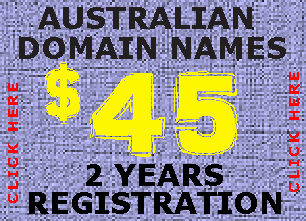The Northern Territory Parliament is one of the three unicameral parliaments in the country. Based on the Westminster System, it consists of the Northern Territory Legislative Assembly which was created in 1974, replacing the Northern Territory Legislative Council.
The Northern Territory Legislative Council was the partly elected governing body from 1947 until its replacement by the fully elected Northern Territory Legislative Assembly in 1974. The total enrolment for the 1947 election was 4,443, all of whom were white. The Northern Territory was split into five electorates: Darwin, Alice Springs, Tennant Creek, Batchelor, and Stuart.
Whilst this assembly exercises similar powers as the governments of the states of Australia, it does so by legislated delegation of powers from the Commonwealth Government, rather than by any constitutional right. The Monarch is represented by the Administrator of the Northern Territory which is similar to that of state governors. Twenty-five members of the Legislative Assembly are elected to four-year terms from single-member electorates.
For several years there has been agitation for full statehood. A referendum was held on the issue in 1998, which resulted in a ‘no’ vote. This was a shock to both the Northern Territory and Commonwealth governments, for opinion polls showed most Territorians supported statehood. However, under the Australian Constitution, the Federal Government may set the terms of entry to full statehood.
The Northern Territory was offered three Senators, rather than the twelve guaranteed to original states. (Because of the difference in populations, equal numbers of Senate seats would mean a Territorian’s vote for a Senator would have been worth more than 30 votes in New South Wales or Victoria.) Alongside what was cited as an arrogant approach adopted by then Chief Minister Shane Stone, it is believed that most Territorians, regardless of their general views on statehood, were reluctant to adopt the particular offer that was made.
The Chief Minister of the Northern Territory is the head of government of a self-governing territory, while the head of government of a state is a Premier. The Chief Minister is appointed by the Administrator of the Northern Territory, who in normal circumstances will appoint the head of whatever party holds the majority of seats in the Northern Territory Legislative Assembly. The current Chief Minister of the Northern Territory is Paul Henderson.
Paul Henderson replaced Clare Martin on 26 November 2007. The Leader of the Opposition was Denis Burke, head of the Country Liberal Party, until the Territory elections of June 2005, where Burke lost his seat. The party then chose Terry Mills as the new Opposition Leader. Subsequently, Jodeen Carney took over for a time. In January 2008, Terry Mills again became the Opposition Leader.
The Northern Territory received self-government on 1 July 1978 under its own Administrator of the Northern Territory appointed by the Governor-General of Australia. The Commonwealth government, not the Government of the Northern Territory, advises the governor-general on appointment of the Administrator, but by convention, consults first with the Territory Government. The current administrator, Tom Pauling, was sworn in on 9 November 2007.
The Northern Territory is represented in the Commonwealth parliament by two Members in the House of Representatives, currently Warren Snowdon from the Australian Labor Party (ALP) and Natasha Griggs from the Country Liberal Party (CLP), and two members in the Senate, currently Trish Crossin for the ALP and Nigel Scullion for the CLP.
The Northern Territory is incorporated into 17 Local Government Areas, including 11 shires and five municipalities. Shire, city and town councils are responsible for functions delegated by the Northern Territory parliament, such as city planning, road infrastructure and waste management. Council revenue comes mostly from property taxes and government grants.
Information supplied here complies with and follows the Guidelines of Wikipedia for re-using content Content from this page is drawn from Here. All content is the property of their copyright owners.

